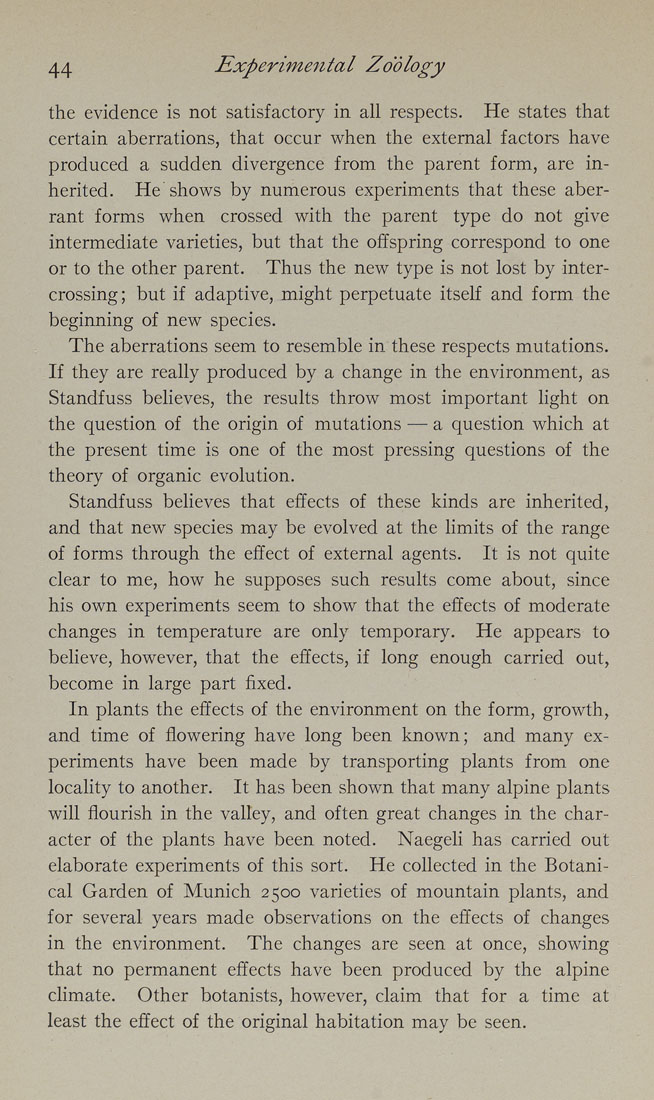44 Experimental Zoology
the evidence is not satisfactory in all respects. He states that
certain aberrations, that occur when the external factors have
produced a sudden divergence from the parent form, are in¬
herited. He shows by numerous experiments that these aber¬
rant forms when crossed with the parent type do not give
intermediate varieties, but that the offspring correspond to one
or to the other parent. Thus the new type is not lost by inter¬
crossing; but if adaptive, might perpetuate itself and form the
beginning of new species.
The aberrations seem to resemble in these respects mutations.
If they are really produced by a change in the environment, as
Standfuss believes, the results throw most important light on
the question of the origin of mutations — a question which at
the present time is one of the most pressing questions of the
theory of organic evolution.
Standfuss believes that effects of these kinds are inherited,
and that new species may be evolved at the limits of the range
of forms through the effect of external agents. It is not quite
clear to me, how he supposes such results come about, since
his own experiments seem to show that the effects of moderate
changes in temperature are only temporary. He appears to
believe, however, that the effects, if long enough carried out,
become in large part fixed.
In plants the effects of the environment on the form, growth,
and time of flowering have long been known; and many ex¬
periments have been made by transporting plants from one
locality to another. It has been shown that many alpine plants
will flourish in the valley, and often great changes in the char¬
acter of the plants have been noted. Naegeli has carried out
elaborate experiments of this sort. He collected in the Botani¬
cal Garden of Munich 2500 varieties of mountain plants, and
for several years made observations on the effects of changes
in the environment. The changes are seen at once, showing
that no permanent effects have been produced by the alpine
climate. Other botanists, however, claim that for a time at
least the effect of the original habitation may be seen.
|








